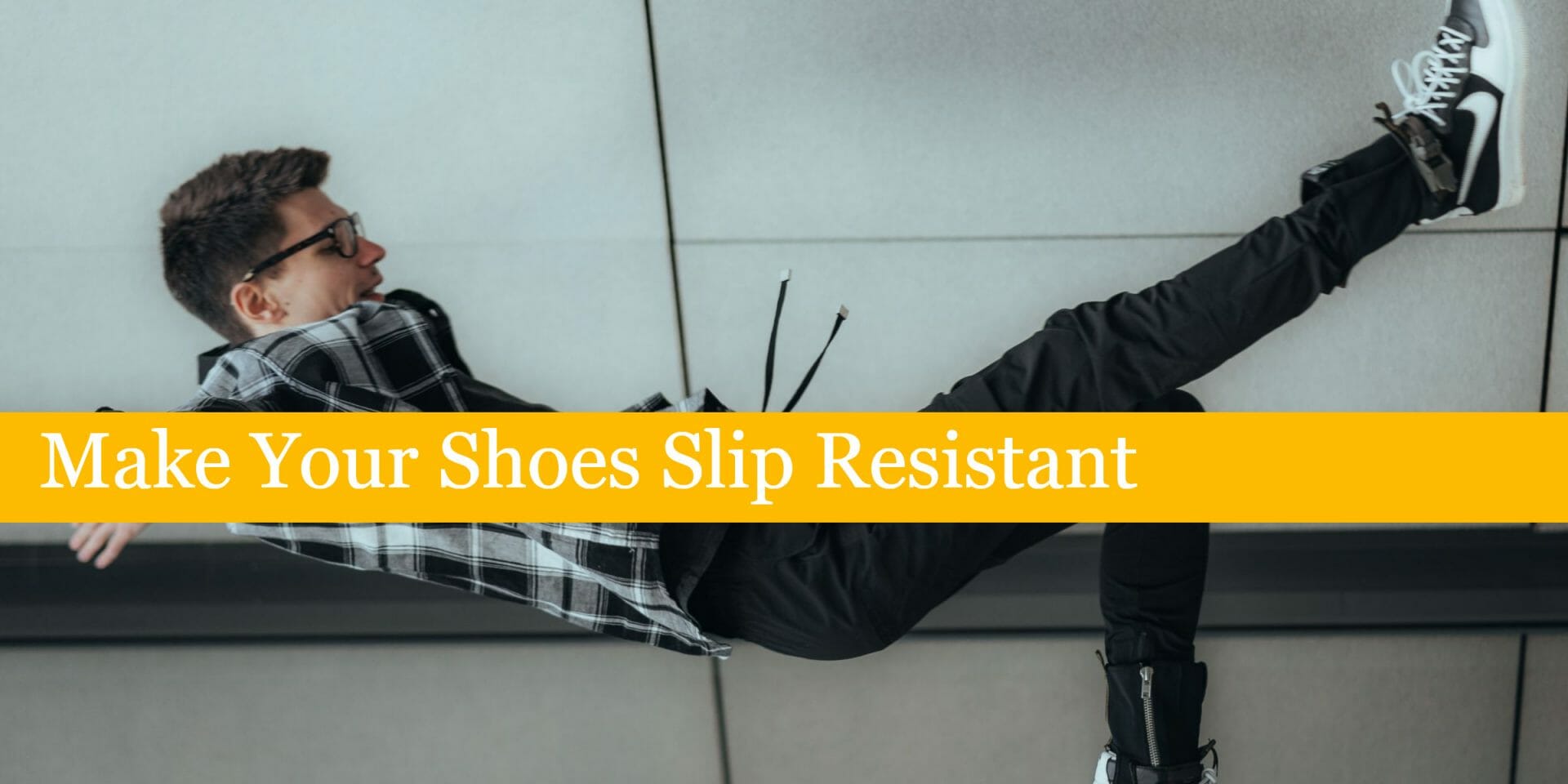
One of the worst things that can happen to a person is to slip and fall. When someone falls from a height, there’s a chance they could get seriously injured or even die. So with that, it’s essential to learn how to make shoes non-slip to avoid these accidental slips.
Here are our top tips on how to make shoes non-slip.
Easiest Ways To Make Shoes Non-Slip
This list provides easy ways to give your slippery shoe soles more traction, giving you peace of mind that you won’t find yourself in dangerous or embarrassing situations.
Try Scuffing the Bottom of the Slippery Shoes
This method works best on shoes with a thin sole. You can buy rubber soles, or you can scuff them yourself using a pumice stone. It’s not difficult to find good deals for these products online. So even someone who doesn’t have any knowledge of making shoes non-slip can do this with ease.
Use Thin Sandpaper
You can cut some relatively coarse sandpaper into small strips and put them on the bottom of your shoes to make them less slippery. Make sure you place them evenly so they don’t slide.
Using Non-Slip Traction Grip
There are many types of non-slip traction grip pads that you can buy to make shoes slip-resistant, even in wet conditions. You could also hire a professional shoemaker to make a rough surface on your boots and make them slip-resistant.
Wear Your Shoes Down Naturally
The more you walk, the soles of your shoes will naturally wear down and become slip-resistant. This method needs time, meaning you need to be patient enough for the shoes to wear.
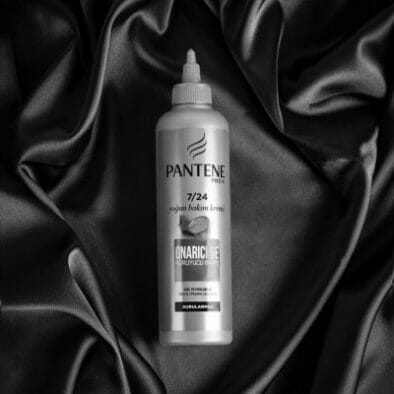
Apply Hair Spray
Apply some hair spray or any other traction spray onto the bottom of your slippery smooth soles to make a rough surface.
Use Puff Paints
You can easily make shoes anti-slip by using puff paint on the bottom of your shoe sole. Your pair of shoes may not look as lovely as with other techniques. But they’ll still create a rough surface on the grip pad of your shoes.
Non-Slip Soles
Another effective technique to avoid accidental slips is buying special soles. However, you may need a professional shoemaker to create them since the soles will be custom-made to fit your shoes.
Scouring the Soles
Make shoe soles rough and non-slip by scratching the tread on their soles. You can use a sharp object like an awl to make shoes slip-resistant.
Use Ankle Straps
Ankle straps and wraps may also make shoes less slippery.
Rubber Glue and Salt
Applying rubber glue to the slippery surface of your shoes and then sprinkling salt on it can make shoes slip-resistant. A hot glue gun comes in handy in this process.
Scrub Your Soles’ Smooth Surfaces on the Hard Ground
Unlike other temporary solutions on this list, scrubbing the soles on any type of rough ground can provide long-term results.

Stick an Adhesive Bandage
Sticking two adhesive bandages on the bottom of the slippery surface of your new shoes can add more traction to your shoes and make them slip-resistant. It’s easy to find Band-Aid’s around – most people have one in their purse.
Use Ice Grips
Attach ice grips to the slippery surface of your shoes. They provide superior grip and allow you to walk safely and securely on ice.
Add an Insole
Insoles are commonly used in cleats to make shoes slip-resistant. And while they aren’t quite as effective at preventing slips, they’re still better than your standard shoes that are slippery.
Duct Tape
Duct tape is another good way to make shoes non-slip. You can attach it to the bottom of your shoes to keep you from slipping.
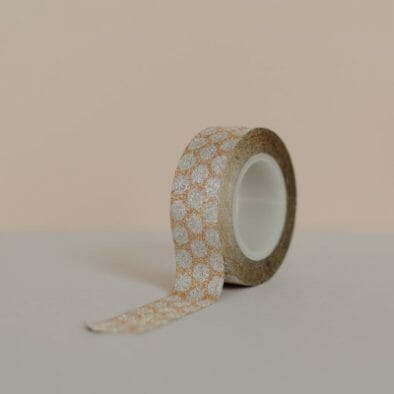
Masking Tape
Masking tape can be a great way to make shoes slip-resistant. You just need to stick it to the bottom of your shoe’s slippery surface to make your shoe sole sturdy in poor weather.
Crisscross Tape Over the Sole of the Shoes
You can use particular brands of adhesive tape to cross over the soles of your shoes. That will provide you with an improved grip and make shoes slip-resistant.
Attach some shelf liners
Attach shelf liners to the bottom of your shoes to make them less slippery. They’re also called contact paper in some places. They are cheap and easy to put on. But they won’t work as well as some of the other methods we’ve discussed in this guide.
Plasti Dip
Plasti Dip is a special liquid that you can pour or rush onto your shoes to make them non-slip. You need to wait for it to dry, though. So keep in mind that this option takes time before you can use the shoes again.
Cut Out Pieces of Suede
All you need to do is cut out suede pieces, then put them on your soles to make them slip-resistant. That helps add traction to the slippery surfaces of your new shoes.
Use a Blow Dryer
Use a blow dryer to warm up the soles of your shoes. Then, attach a grip tape to your non-slippery shoes to make them less resistant.
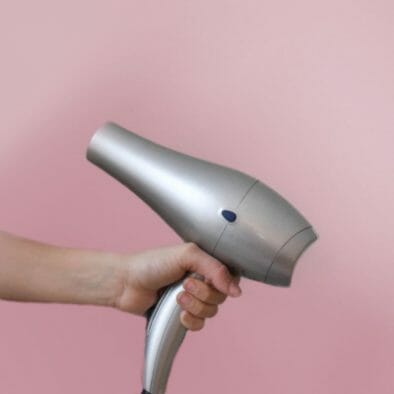
Use Liquid Nails
Using liquid nails to change the sole of your shoes is another easy method of making your shoes slip-resistant. Unfortunately, liquid nails are just a temporary fix and may not work well on wet surfaces.
Rubber Cement or Turtle Wax
You can also use rubber cement or Turtle Wax on the bottom of your slippery shoes. This will help you walk with more safety and security in less dangerous environments.
Baby Powder
You can also use some powders on the bottom of your shoes to make them less slippery. A typical powder people use is baby powder, which isn’t as effective at preventing slips but will still help lessen their likelihood.
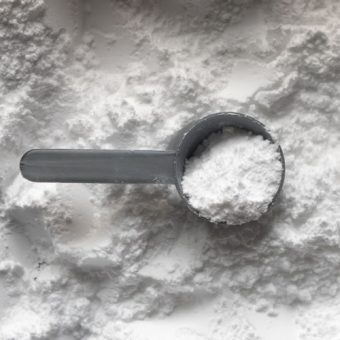
Use Pomade or Shoe Polish
You can also put some wax-like pomades and shoe polishes onto the slippery surface of your shoes. This is an excellent way to make shoes slip-resistant, but it may be hard to do depending on the type you’re using and where you apply it.
Acrylic Paint
Another option is to use some acrylic paints on the bottom of your shoes. They’re not as effective at preventing slips. But they’ll still help make them less likely. However, make sure you apply the paint on the entire sole.
Blackboard Chalk
You can also use blackboard chalks as an alternative way to make shoes non-slip. Just draw different patterns and designs on your shoes. It won’t work well in every environment, but it will help you when walking through wet areas like grass or puddles.

Anti-Slip Shoe Covers
You can also use special anti-slip shoe covers that you wear over your shoes. They’re better than using other methods we’ve discussed to make shoes slip-resistant, but they aren’t as effective and don’t work in all areas like the grip tapes do.
Tennis Balls
Tennis balls are another excellent option to make shoes slip-resistant. Just attach them to the bottom of your shoes, and they’ll prevent you from slipping in most areas. Of course, you’ll look ridiculous, but if safety is the primary concern – who cares?
Anti-Slip Socks
Use anti-slip socks to make it less likely for you to fall when walking on slippery surfaces. They are the cheapest method on this guide, but they aren’t as effective at preventing slips in some areas.
Rubber Mat
Another good option is to use a rubber mat on the bottom of your shoes. You can stick it to the slippery surface and then cut it so that it’s not too bulky. This will make slipping less likely if you’re walking through wet areas like puddles or rainwater.
While these are not permanent solutions, they’ll go a long way in preventing you from falling on slippery surfaces.
FAQ
What Are Non-Slip Shoes?
A non-slip shoe is a shoe with a specially designed sole to provide better traction between the shoe and the surface. When you wear a no-slip shoe, your foot sticks to it, which helps you not to slip.
It’s not only suitable for young children who are likely to slip and slide all over, but also for any person who needs more grip when walking.
One of the most popular benefits of wearing non-slip shoes is that they give people with arthritis more grip on slippery floors. However, it can also be beneficial for older adults, pregnant women, or anyone else who needs some extra grip on their feet.
People often wear non-slip shoes with wet surfaces since they provide better traction for standing or walking on slippery surfaces.
They’re helpful in the kitchen, too. For a better grip when you’re cooking and carrying pots of hot liquids, non-slip shoes can be beneficial. Even when just walking around the kitchen, they provide an extra grip and safety feature for anyone who needs it.
A non-slip shoe is suitable for people who need to stay on their feet all day. However, it can also be beneficial for someone who works at a desk all day. They’re very supportive and give your feet extra cushioning throughout the day, which can be helpful for anyone who spends hours on their feet all day long.
Non-slip shoes are also great for anyone who walks on the treadmill often. It gives them more support and cushioning while on the treadmill. So their feet don’t have to work as hard during their workout.
What Makes Shoes Slip-Resistant?
Slip resistance is a measurement of how well a surface can resist an external force that would make it slide. Sometimes, you want your shoes to be slip-resistant so that you can minimize any injuries caused by accidents.
But what makes a slip-resistant sole? Many factors contribute to the level of slip resistance of a shoe.
Sticky Rubber Soles
The sticky rubber soles on shoes reduce slippage on wet surfaces by making more surface contact. The same sticky rubber soles are also on many rubber gloves to better grip surfaces when they have them on their hands.
Ridges, Bars, and Cleats
These are raised patterns on the bottom of shoes that provide more points of contact with the surface. This means more areas where the shoe can grip onto the surface, reducing slippage even more. Ridges, bars, and cleats on shoes can be made of plastic, metal, or rubber.
Textured Soles and No-Slip Pads
These are different surfaces on the bottom of shoes that have been designed to provide better traction. In addition, they reduce slippage even more because they give you a more extensive area where your foot will stick.
Anti-Skid Tread
This kind of surface design provides increased grip with each step, especially when going up and downstairs. So they’re beneficial for people who need to walk up and down slippery, wet stairs all the time in their job.
Traction Soles
These are made of materials that have uneven surfaces with points, gaps, and microscopic projections. The irregular textures allow the sole of the shoe to grip onto surfaces better and reduce slippage.
Anti-Static Materials
Anti-static materials are substances that reduce the buildup of static electricity on surfaces. So even when you’re wearing shoes with anti-static materials, your feet won’t attract all of the dust and particles around them, further decreasing slippage.
Chemically Treated Soles
Chemically treated soles are made from materials that have been altered to reduce slippage. They can either be coated with or dipped in chemicals which help create a better grip on surfaces so you don’t slip when walking around.
Anything That Creates More Surface Contact
These are materials with textures that have more surface area, making them grasp onto surfaces better. That includes things like the rubber soles on many shoes, gardening gloves, and mops.
How Do I Keep My Boots From Slipping on Ice?
Slipping during the winter months is very common, especially on ice. You can also apply the same principles used to create non-slip shoes to winter boots. All you have to do is find a way that the boot will stick better onto the ice. So there’s less chance of slipping and falling when walking during the winter months.
There are many ways to keep your boots from slipping on ice, but it’s essential to decide which method is best for you.
There are two main types of boots explicitly meant to deal with icy sidewalks: ice grips and rubber cleats. Ice grips, which look like small suction cups, are adhered to the bottom of your boot. Rubber cleats are perhaps more familiar and look like tire treads.
Traction markers are small adhesive rubber or fabric patches stuck on the bottom of boots. They can be made out of rubber or other materials like fabric, copper, or even magnets. These are adhesive and come in different shapes.
Traction markers can be either round or triangular (like a snowflake). These are cheap and effective but messy in colder weather when they freeze. They don’t last long in warmer weather or high-traffic areas.
One way to keep your boots from slipping on ice is to use either rubber cleats or ice grips. Rubber cleats are tire-like treads that you attach to the bottom of your boots. These are popular for people who regularly use their boots on icy surfaces. But, unfortunately, they may be hard to find in stores.
Rubber cleats are available in different shapes and sizes. But they all have one thing in common: they create more surface area on the bottom of your boots which increases friction and helps to keep you from slipping.
In addition, they come in a variety of shapes: round, square, and diamond. They can also come in different colors, which might help if you want to color coordinate your boots and cleats.
It’s important to remember that rubber cleats will wear down with time and use, so keeping an extra set or two around is wise.
What To Put on the Bottom of Shoes To Stop Slipping?
There are many things you can put on the bottom of your shoes to stop them from slipping. Some people use rubber soles, usually found on dress shoes, because they do not look too nice or make too much noise.
Other people use rubber grip tape, which has a sticky surface on the bottom of shoes to stop slipping. You can find the grip tape at any store that sells carpentry tools or home improvement equipment.
If you’re looking for something more natural-looking, there are many products out in the market today called “anti-skid pads.” These are usually made of rubber, foam, or felt, and you can cut them to fit the bottom of your shoes so they will stop slipping in all conditions.
You could also use something like a piece of chewing gum, which is very cheap and easy to put on the bottom of your shoe. Specialized substances like waxes, oils, and powders can also help prevent slips.
There are many types of shoe soles that you can get from specialty retailers that will help give you better traction when walking. These specialty soles typically have rubber studs on the bottom to grip onto the floor and give you a way to stop slipping.
How To Add Traction To Shoes
Several methods can help increase traction on your shoes. One method is stick-on rubber treads, which you can purchase on Amazon or a local hardware store.
These will provide better grip than standard shoes if there’s ice and snow outside on your morning runs or walks. Another method is the use of a shoe grip liner.
These can be worn inside your shoes and provide better traction, especially if you live in an area with snow outside for several months during winter.
Finally, you can also purchase cleats that attach to standard running or walking shoes to make them more slip-resistant on icy surfaces and reduce your risk of falling.
So, Do You Now Know How To Make Shoes Non-Slip?
Did you enjoy this list with tips on how to make your shoes slip-resistant? By using these straightforward techniques, you’ll easily be able to sort out new shoe soles or stubbornly slippery soles.
Let us know what you think of these tips in the comments and share the article to help others who might be wondering how to make their shoes non-slip!
